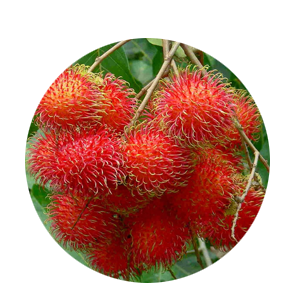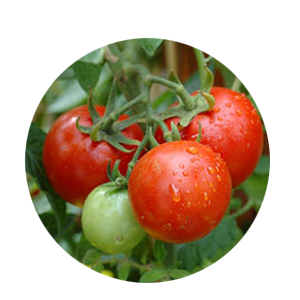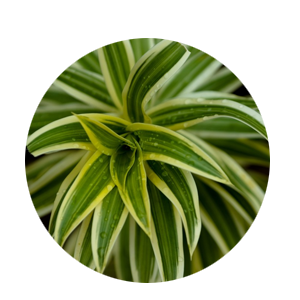Innovative and refined rural experiments and researches
Karshakasree K. C. Kuriakose's ever-green mind continues to seek for new realm of thoughts and possibilities in the field of nursery and agriculture sector. By our hard work and refined rural experiments lots of researches and findings were derived from us and some of them are worth mentioning.
Cheerakuzhy Young Bud System
Cheerakuzhy Young Budding is a milestone in the history nursery industry. Having tired of many experiments and to overcome the drawbacks of the age-old method of plant propagation, after a series of painstaking effort, our pioneer, Shri K. C. Kuriakose, came out with a new method in Budding. Just by using his available tools at home and commonsense, he developed a new successful method and later, it came to be known as Cheerakuzhy Young Budding.
Under this method, germinated seeds are planted directly in polybags and budding starts from the 28th day and continue up to 60 days. The scion (bud wood) used for Young Budding should be of 20 to 40 days old depending up on the plant variety. The tissues of the scion and the stock seedling become firmly united within 3 or 4 weeks after budding. After the successful young budding process, the budded stock seedlings will be allowed to grow in the poly bags for 4 to 5 months. Thereafter, the shoot portion above the bud patch will be chopped off. The bud will start sprouting from the 10 to 15 day onwards. After further growth of 4 to 6 months; the young bud poly bag plants will be ready for transplanting in the field.
Cheerakuzhy Root Trainer System
Recently, Rubber Research Institute of India has developed and introduced a little more advanced method of raising rubber saplings in polypropylene cups instead of polythene bags. These cups are called 'Root Trainers'. They have certain specific features like tapering or conical shape, vertical ridges, drainage hole at the bottom etc. They are all incorporated with the purpose to provide proper training for the structural development of roots in a systematic manner and hence the cup is termed as 'root trainer.
Successful introduction of root trainers for Hevea has inspired us to change our outlook in the nursery practices. Root Trainer is a sophisticated propagation technique having great potentials in improving the physical quality of root system as well as reducing the time and cost required for the production of advanced planting materials. Taking these merits into consideration, Cheerakuzhy Group of Nurseries has also initiated a set of experiments to develop Root Trainer plants in exotic fruit plants like Rambutan, Pulasan, Durian, Milk Fruit, Mangosteen, Longan, Mangos, Jack fruit etc. In some variety of plants, we failed, but we could have developed some successful methods to produce root trainer fruit plants such as Rambutan, Durian, Longan, Milk Fruit, Mangos and jack fruit. We are continuing our efforts in the propagation of other species of plants.
Under our method, the root trainers are filled uniformly with mixed potting mixture instead of soil. The potting medium consists of sieved and cured coir pith mixed with appropriate quantities of rotten cow-dung, bone-meal, rock phosphate etc. Germinated seeds are planted directly in these root trainers for raising the stock seedlings. These stock seedlings are stacked line by line in ‘grower stands’ providing with proper spacing to attain scientific growth. Then the seedlings are subjected to Young Budding at the starting of the second whorls stages i.e., on 28th day onwards. After the successful budding process, the Young Budded plants will be allowed to grow in the root trainer itself for 4 to 5 months. Thereafter, the shoot portion above the bud patch will be chopped off. Arrange these plants in ‘hardening stand’ to undergo hardening period. The bud will start sprouting from the 10 to 15 day onwards. After further growth of 4 months; the plants will be ready for transplanting in the field. The root system of Root trainer plants are well developed and strong compared to poly bags. The secret or technique behind this well rooting is describes as under:
In the natural process, the main root keeps growing down. However, since there is no contact with ground soil, it will be difficult for the main root to grow further and gradually the growth gets affected. During the hardening process the tap root resumes growth in a few days and undergoes natural air pruning near the hole at the bottom and thus prevent its coiling inside the container. This stress induces emergence of large number of lateral roots into the well aerated potting medium. The vertical ridges of the container will direct these roots downwards and thus prevent its circular growth. These lateral roots also undergo air pruning and as a result a hardened root trainer plant will have a root system consisting of central tap root and large number of lateral roots well oriented without any deformity.
In order to get over worst situation, which arises from the "Natural Air Pruning', many lateral roots will start growing from the main root and spread all over the coir pith (coco peat) inside the cup. Since the seeds are planted directly into the cups in the Cheerakuzhy Young Budding system, many natural lateral roots must be already there. With in 3-4 months after cutting back the plants attains two whorls of leafs and are ready for planting. The ridges inside cup will prevent lateral roots from growing in circle or coiling. Since the plants are used to these adverse growing circumstances in the initial stages, when they are transplanted to the plantation, they will be able to withstand any tough situations.
Young Bud 3-in-1 Plants
This is one of the novel method developed by the research wing of Cheerakuzhy Group of Nurseries. Under this method, three germinated seeds of high quality are directly planted in a particular manner in poly-bags in order to avail healthy plants to carry out budding process from 28th day onwards. At the time of growing stage, two among the three plants are grafted together with the third one. Later, the young budding will be done on one healthy plant using the scion of high yielding clones. After the successful budding process, the scion will be allowed to grow and the three plants which are grafted and budded together will be grown into one, having three separate root systems exhibiting a fantastic and astonishing strength to the stem of new plants, This is known as young bud 3-in-1 plants.
Young Bud 2-in-1 Plants
This technique also adopts the same method that is applied in the case of young bud 3-in-1 plants. Here, we use 2 germinated seeds of high quality instead of three seeds. At the time of growing stage, the two plants is grafted together.. Later, the young budding will be done in one healthy plant . After the successful budding process, the scion will be allowed to grow and the two plants which are grafted and budded together will be grown into one, having two separate root systems exhibiting a fantastic and astonishing strength to the stem of new plants, This is known as young bud 2-in-1 plants.
Other Contributions
Coir pith processing Machine : In the trial period of root trainer plants, we faced a lot of problems like blackening of roots, growth retardation of roots, budding failure, uneven growth of plants in the nursery as well as in the field of farmers. From our experiments, we could find out the reasons. The coir pith which is used as the medium in the root trainer cup, contains some compounds like Lignin, tannin and phenolic acids. We realized that with out removing these compounds from coirpith, we can not produce good quality root trainer plants. Also it is very important to maintain the neutral ph and electrical conductivity of the coco peat. Initially, we used manual methods to process the coir pith. To overcome the drawbacks of the manual method, our research wing designed and invented a fully automated machine to process the coir pith.
Special Packing cases to send plants to distant locations
Packing cases specially designed by us for carrying Root Trainer cup plants are made available for the convenience of the customers. 100 cup plants can be easily accommodated in one packing case. By using such packing cases, more plants can be accommodated in the vehicle and thereby one can save on transportation cost. This kind of compact packaging also ensures that cup plants are easily transported to distant places in India or abroad without any damage being caused to the plants. By using such packing cases, plants can be transported through Train/Truck/Flight to the distant destinations. Moreover, this kind of packaging also helps the workers to carry the plants easily to any given spot of the plantation site, even where vehicle movement is not possible, thus saving considerable time and manpower.
Special grilled vehicles for Root trainer plants free delivery
Since Root trainer cups are in conical shape, it is not as easy to transport them in normal vehicles as is the case with poly bag plants. Therefore, in order to resolve this inconvenience, we have made a two tier grilled vehicle for transporting plants.
Special Tools and Equipments
We have been using some special tools and equipment in our Root trainer nursery to facilitate the work in the production process of root trainer plants. All these are invented by our R&D department to meet our requirements which are derived from our experience. Some of them are listed below for the reference for the research fellows in this field –
- Grower stand to grow the plants in initial stages
- Hardening stand to facilitate proper hardening to the plants
- Uprooting crowbar
- Special Trolley to carry root trainer plants
- Special tool to dry out excess water from root trainer cup
- Special scissor for cutting back the plants
- Two- tier trolley to transport filled root trainer cups
- Special trays used for handling plants
- Special handle to lift plants with stand
- Relax stand - to keep the plants while loading
- Two- tier grilled vehicles to transport root trainer plants
- Modified pump for manure application
- Packing Case designed to export of plants.
Apart from this, our R&D wing tried lots of experiments in developing Root trainer teak plants, Root Trainer Mahogany plants, Root trainer Nutmeg plants etc. We have achieved success in al these and such plants are available in our nursery.







